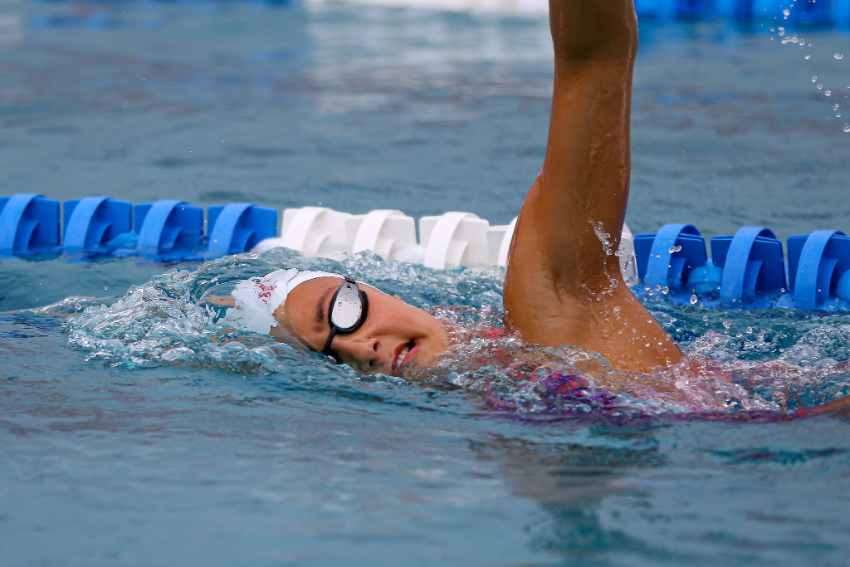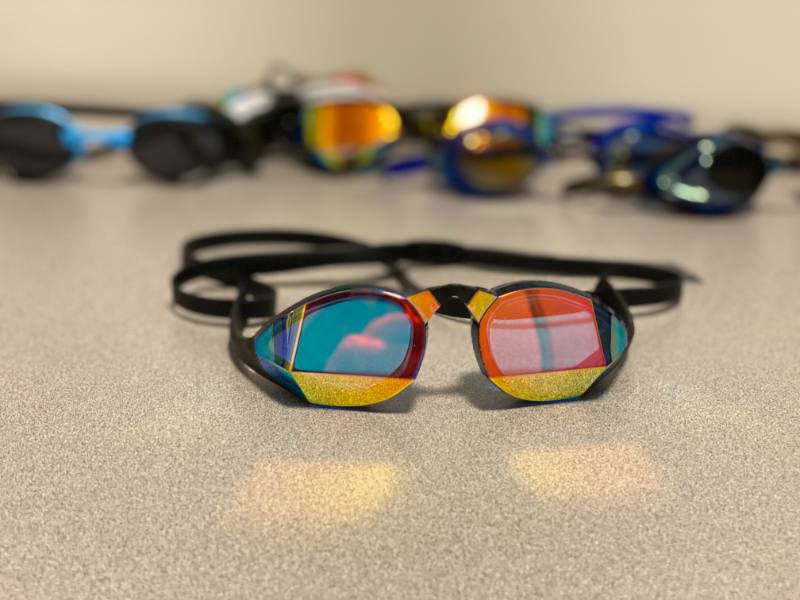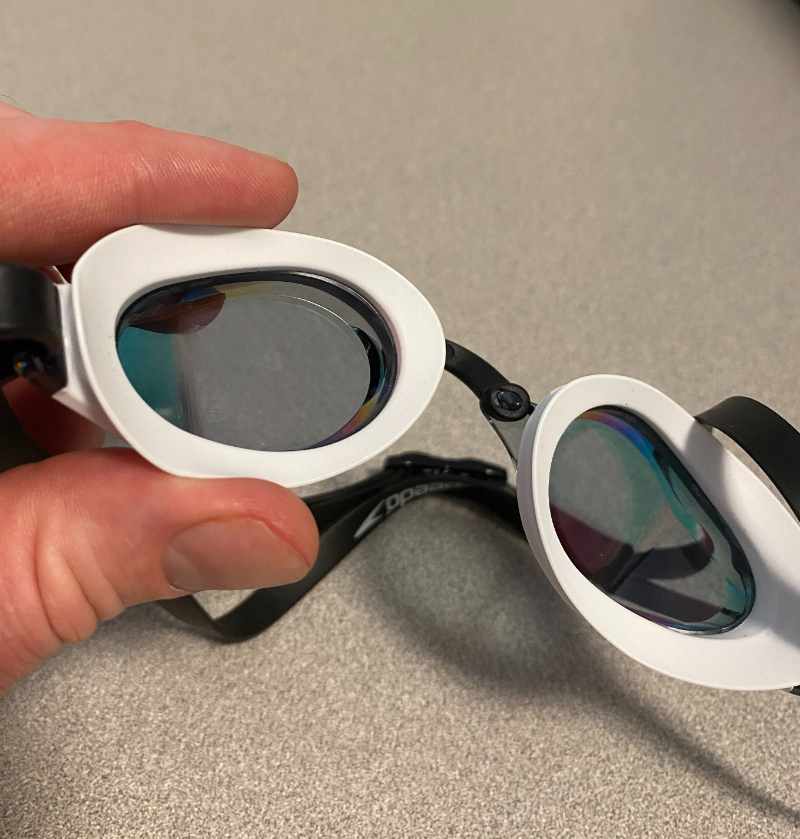
9 Benefits of Training with a Swim Snorkel
The swim snorkel has become part-and-parcel of every competitive swimmer’s gear bag. Here are a bunch of reasons why you should use it in practice today to swim faster.

Nothing ruins a good swim faster than dirty goggles. Here’s everything you need to know about cleaning your swim goggles and keeping them in tip-top shape.
Swimming goggles are an essential part of swimming safely and quickly in the water.
After all, they help you properly time your flip turns, help you avoid errant swimmers (and lane ropes!) in the water, and they keep your eyes from getting bloodshot and itchy after long swims.
But as much as your swim goggles take care of you, you should also be taking care of your swim goggles!
In this guide to cleaning your swim goggles, we will cover the best ways to do it so that your goggles stay clean and clear for every lap.
Let’s jump right in!

The quickest and easiest thing you can do to keep the goggle lenses clean is to give them a quick rinse after you hop out of the water (or the lake, if open water is your jam!).
Some clean, cool, and freshwater will help remove any of the condensation and water-born bacteria that can cause mold and bacteria to grow in the folds of the gaskets in your swim goggles.
A quick rinse is a super simple way to significantly increase the lifespan of your goggles and keep them nice and clean for your next swim.
While there are some excellent anti-fog swim goggles that reduce the build-up of fog and condensation during your swim workouts, the reality is that the delicate anti-fog coating on the inside of your goggle lenses will fade and deteriorate over time.
This can give the impression that they are dirty, when in reality, they may just have lost their anti-fog.
Anti-fog sprays for swim goggles are inexpensive, work quickly, and can help you see clear for much longer than they would if you just let the anti-fog coating fade into the distance (or in this case, into the deep end of the pool).
Mould and other yucky stuff can fester and grow in enclosed and moist conditions.
This is why it’s crucial to allow your swim goggles (and the rest of your swim gear, for that matter, from your training suit to your swim towel) an opportunity to dry out so that mold doesn’t have a chance to take root in your swim goggles.
Once you’ve given them a rinse, let them “breathe” and dry out before tossing them into the depths of your swim bag for the drive home. Or, better yet, store them in a swim goggle case to avoid scratches and dirt building up on the goggles.
This is a habit that I still have not cracked—the temptation to wipe away a droplet of condensation so that I can better see the pace clock is often too hard to overcome!
But as we discussed earlier, the fragile nature of the anti-fog coating means it can be rubbed away by the well-meaning but otherwise short-term-thinking finger swipe.

Additionally, the oils on your fingers will also dirty up the inside of your goggles lens.
(All that said, there is ONE set of swim goggles—the Arena Swipe Ultra Anti-Fog Swim Goggles—that uses the finger swipe as a way to “reset” the anti-fog coating. Seriously!)
Older swimmers—myself included!—remember when swim goggles only came with latex straps. Latex is cheap, making goggles less expensive, but it’s also way more susceptible to cracking and degrading from exposure.
Most goggles are now built with silicone, from the gaskets to the head straps, and this material is light years more durable than latex.
That said, it’s not immune to prolonged exposure to UV rays, which can eventually crack and make brittle the fundamental parts of your swim goggles, including the straps and the gasket that sinks nicely into your face to keep your swim goggles from leaking.
Although swim goggles frequently have mirrored lenses to protect your eyes from the sun, the components that make up the goggles, including rubber, silicone, plastic, and polycarbonate, are not immune from long-term damage due to UV exposure.
Left your goggles in the basement of your swimming bag for well, who knows how long, and it’s gotten real smelly?
Mix up a bowl with a couple of tablespoons of white vinegar with some lukewarm water and let the goggles soak in them for 60-120 minutes.
White vinegar is an excellent antifungal and antibacterial1, so if your swim goggles pop a case of the moldies, soaking them in a blend of white vinegar and water can help zap the goggles back to cleanliness.
Your swimming goggles are one of your best friends when you are at the pool.
Whether you are taking your favorite swim goggles to the local lap swim or strapping on goggles designed for open water swims, make sure to take care of your goggles so that they can help you swim your best.
Happy swimming!
Should You Swim Without Swim Goggles? The swim goggle is a standard piece of swim gear for both leisure and competitive swimmers. But does that mean you can swim without goggles? Here’s a look at the pros and cons of swimming without goggles.

Olivier Poirier-Leroy Olivier Poirier-Leroy is the founder of YourSwimLog.com. He is an author, former national level swimmer, two-time Olympic Trials qualifier, and swim coach.

The swim snorkel has become part-and-parcel of every competitive swimmer’s gear bag. Here are a bunch of reasons why you should use it in practice today to swim faster.

With the FORM 2 Smart Swim Goggles, the world’s first and best smart goggles for swimmers get a big upgrade. Here’s what to know about how they perform in the pool.

The Magic5 Swim Goggles are the first of its kind—custom built goggles made for the specific shape of your face. But are they as good as advertised? In this review, I buy a pair for myself and hit the pool.

Ready to throw down on a new swimmer’s snorkel? Here are reviews of the best swim snorkels for lap swimming.

Looking to get some new swim gear on a budget? Shop the best Black Friday deals for swimmers in this exclusive guide.

Looking for the best swimming app to maximize your time and effort in the water? Here’s a look at the top swim apps for conquering your swim workouts.